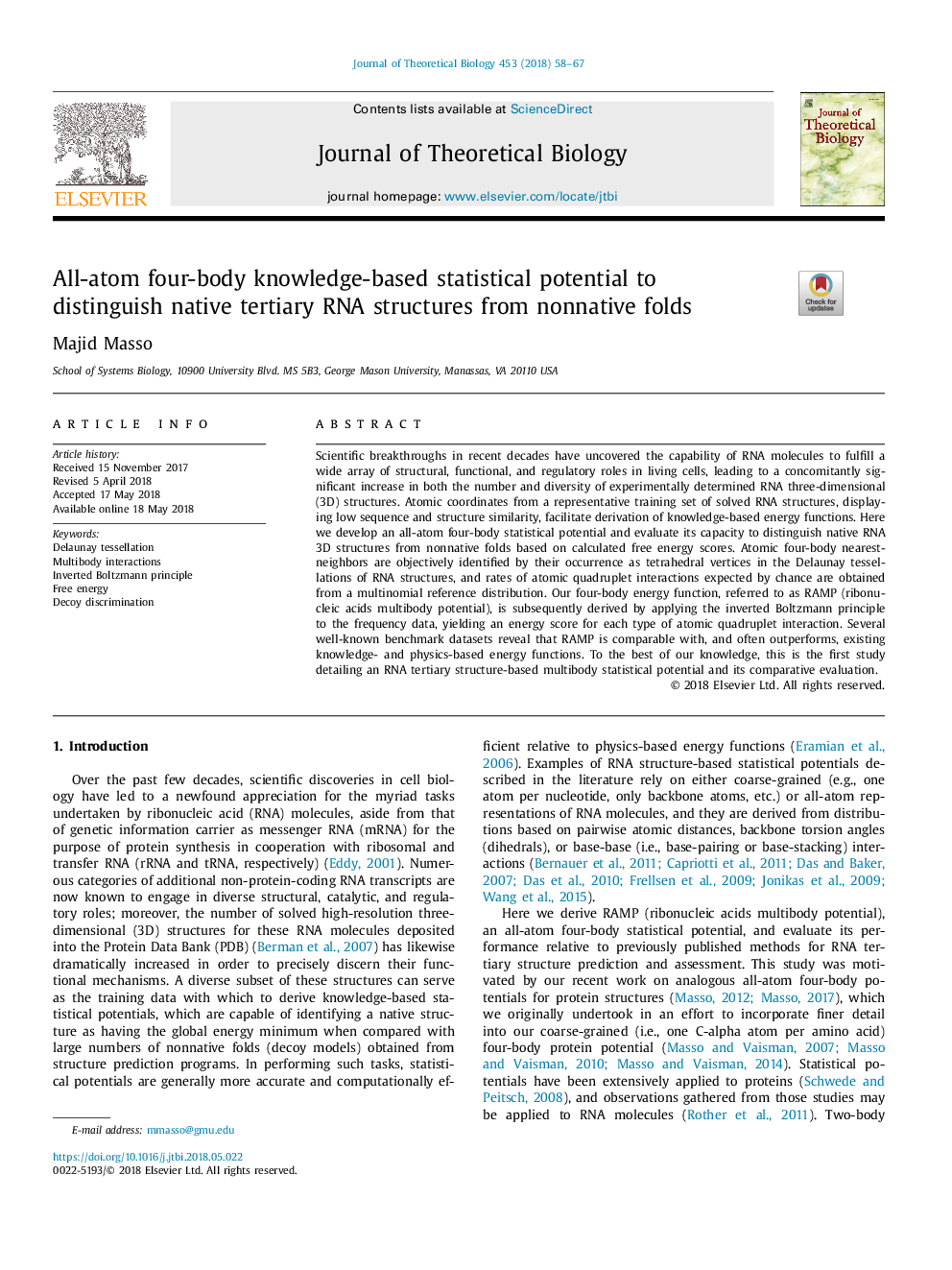| Article ID | Journal | Published Year | Pages | File Type |
|---|---|---|---|---|
| 8876603 | Journal of Theoretical Biology | 2018 | 10 Pages |
Abstract
Scientific breakthroughs in recent decades have uncovered the capability of RNA molecules to fulfill a wide array of structural, functional, and regulatory roles in living cells, leading to a concomitantly significant increase in both the number and diversity of experimentally determined RNA three-dimensional (3D) structures. Atomic coordinates from a representative training set of solved RNA structures, displaying low sequence and structure similarity, facilitate derivation of knowledge-based energy functions. Here we develop an all-atom four-body statistical potential and evaluate its capacity to distinguish native RNA 3D structures from nonnative folds based on calculated free energy scores. Atomic four-body nearest-neighbors are objectively identified by their occurrence as tetrahedral vertices in the Delaunay tessellations of RNA structures, and rates of atomic quadruplet interactions expected by chance are obtained from a multinomial reference distribution. Our four-body energy function, referred to as RAMP (ribonucleic acids multibody potential), is subsequently derived by applying the inverted Boltzmann principle to the frequency data, yielding an energy score for each type of atomic quadruplet interaction. Several well-known benchmark datasets reveal that RAMP is comparable with, and often outperforms, existing knowledge- and physics-based energy functions. To the best of our knowledge, this is the first study detailing an RNA tertiary structure-based multibody statistical potential and its comparative evaluation.
Keywords
Related Topics
Life Sciences
Agricultural and Biological Sciences
Agricultural and Biological Sciences (General)
Authors
Majid Masso,
